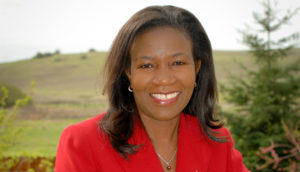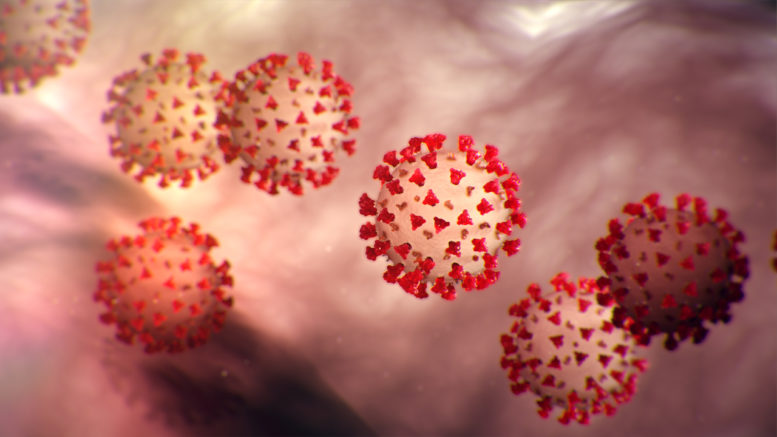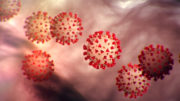Editor’s note: Sacramento County needs widespread vaccinations to further ease lockdown
Residents of Sacramento County, like many Californians, can be forgiven for feeling whiplash on COVID-19 lockdowns as state decisions change which businesses can open and under what limits.
Still since last fall, Sacramento County has spent the most time in the most restrictive “purple” tier of the state blueprint—and it appears it will stay there until enough people get vaccinated to dramatically reduce coronavirus transmission.
UPDATE: On Tuesday, Feb. 2, state public health officials put the county’s rate of new daily cases at 30.6 per 100,000 people and its test positivity rate at 8.5%. That’s a continuing improvement from 43.5 new cases a day and 10.6% test positivity on Jan. 26, 48.7 new cases a day and 11.4% positive tests on Jan. 19 and 56.6 new cases and 14.0% test positivity on Jan. 12.
To get out of the purple tier, the county must get the new case rate to 7.0 or less and the test positivity rate to 8% or less.
But some don’t want to wait that long.
On Tuesday, Sue Frost, the new chairperson of the Board of Supervisors, tried—but failed—to sneak through a resolution for more local control of COVID-19 rules, including different restrictions by zip code or smaller areas of the county. Frost, who has been urging a faster reopening for months, said that the lockdown is causing unnecessary “pain and suffering” in areas without much coronavirus spread and that those resources could be shifted to needy communities.
“There’s more to public health than pandemic,” Frost told her colleagues.
“Sacramento County has experienced increases in drug abuse, delayed medical care, depression, and the overall need for mental health services,” the resolution says.
But Olivia Kasirye, Sacramento County’s public health officer, told the board that counties cannot approve more lenient rules than the state. She didn’t know about the resolution until alerted by Supervisor Phil Serna.
Supervisor Patrick Kennedy also opposed the resolution, calling it “politically charged and not based on science.”
And Supervisor Rich Desmond said while he wants to reopen more businesses, it would be even more confusing to have different rules for different parts of the county.
Frost also denied criticism from the public that the resolution was racist and elitist. Still, her resolution died after none of the four other supervisors supported it.
Mass vaccination is the best way out of COVID lockdown.
But Sacramento County is still not receiving nearly enough doses and is still in the first phases of vaccinations, limiting them to health care workers, first responders and nursing home staff and residents. While the state has broadened eligibility to all those 65 and older, the county says it is waiting for more supplies.
Kasirye told supervisors Tuesday that as of Jan. 12, the county had received about 95,000 doses of vaccine, including about 26,000 for pharmacies to vaccine staff and residents at nursing homes and other long-term care facilities.
Most of the other doses went to hospitals and community health care providers, but county Public Health has directly given 3,157 shots, with another 4,374 doses on hand.
“We’re trying to do this methodically and asking everyone to be patient,” Kasirye told supervisors.

She gave supervisors a detailed presentation on the county’s vaccination plan, including opening more public vaccination sites as supply increases. The state site at Cal Expo, which opened Jan. 7, can dispense 500 shots a day now with the goal of as many as 2,000. The county is also working with community groups and is building two portable trailers.
On Tuesday, the state announced changes to accelerate vaccinations. The first group has been health care workers and those 65 and older. In mid-February, it plans to start shots to teachers, child care workers and first responders. After that, it will move to an age-based statewide eligibility system.
Jim Hunt, the county’s acting health services director, said until vaccinations increase, COVID-19 safety is still essential. While new cases have plateaued, they are still at an “extremely high” level, he told supervisors.
As of Tuesday, the county had nearly 84,000 cases and 1,200 deaths.
After the pandemic started last March, case counts dropped enough by May for the county to reopen many businesses. But in mid-July, amid another spike, Gov. Gavin Newsom ordered a statewide shutdown of indoor dining, gyms, hair salons and other businesses.
In late August, the state unveiled a new blueprint for businesses, with four color-coded tiers based on rates of new daily cases and positive tests. Sacramento County started in the most restrictive purple tier and stayed there until moving into the red tier on Sept. 29. That allowed indoor dining and movie theaters and houses of worship to resume limited indoor operations.
With new case rates dropping, local officials even set a goal of reaching the even less restrictive orange tier by Halloween. That never happened. Instead, the county went back to the red tier on Nov. 13 and by December, the new case rate had increased ten-fold.
And with yet another spike in cases, the state put the Sacramento region and most of the rest of California under a new stay-at-home order on Dec. 10.
That wasn’t lifted for Sacramento and surrounding counties until Jan. 12, when projections of the region’s availability of intensive care unit beds rose above the 15% threshold. That allowed restaurants to offer outdoor dining again, barbershops to reopen and retail stores to increase the number of customers indoors.
On Monday, the state surprisingly announced the end of stay-at-home orders for all of California, saying that the ICU projection for each region was higher than 15% and was 30% statewide. All but four counties, however, are still in the most restrictive purple tier.
State officials said that the stay-at-home order and curfew had worked and that the post-holiday surge hadn’t been as bad as feared. “Seven weeks ago, our hospitals and frontline medical workers were stretched to their limits,” Mark Ghaly, the state’s secretary of health and human services, said in a statement. “But Californians heard the urgent message to stay home when possible, and our surge after the December holidays did not overwhelm the health care system to the degree we had feared.”
Some, however, are questioning whether the move is premature until widespread vaccinations, especially with new variants of coronavirus that are more easily transmitted.
“Registered nurses across the state of California know that there is a human cost to lifting stay at home orders too soon,” the California Nurses Association said in a statement. “Let’s be clear that even if numbers are ‘trending downward,’ we are still in the midst of the most deadly surge of Covid-19 yet. RNs have seen more patient death in the past few weeks than we have seen at any other point in our careers, and as frontline workers, we know better than elected officials and business leaders that it is not time to let our guard down.”
As of Tuesday, the state had recorded more than 3.1 million cases and more than 37,500 deaths. It had sent nearly 4.7 million doses of vaccine to local health departments and hospitals, which had administered nearly 2.6 million doses.






Be the first to comment on "Sac’s new normal on COVID-19"